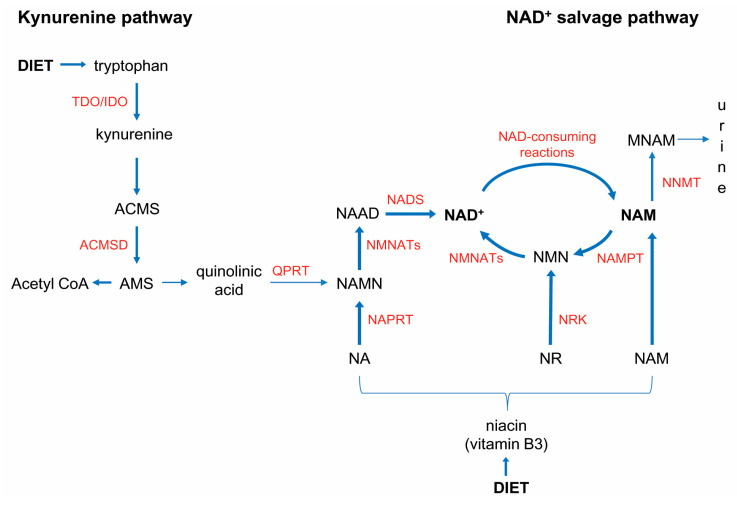Figure 1.
NAD+ biosynthesis pathways. Human dependency on vitamin B3, for NAD+ synthesis, is based on high activity of alpha-amino-beta-carboxy-muconatesemialdehyde decarboxylase (ACMSD), which diverts alpha-amino-beta-carboxy-muconatesemialdehyde (ACMS) away from NAD+ synthesis. Nicotinamide (NAM) is the main precursor for NAD+ synthesis and the byproduct of NAD+-consuming enzymes. Under physiological conditions, de novo synthesis of NAD+ from tryptophan, in the kynurenine pathway, takes place mainly in the liver. The main dietary precursors for NAD+ synthesis are nicotinic acid (NA), nicotinamide riboside (NR) and nicotinamide (NAM), collectively termed vitamin B3 or niacin. Endogenously, NAM is generated as a byproduct of NAD+-consuming reactions. Under physiological conditions, most of the NAM generated in NAD+-consuming reactions is recycled to NAD+. Nicotinamide N-methyltransferase (NNMT) is a safeguard, which in conditions of either overwhelming NAM generation in NAD+-consuming reactions, or dietary surplus, methylates NAM to prevent NAM’s inhibitory effect on PARPs and SIRTs.

